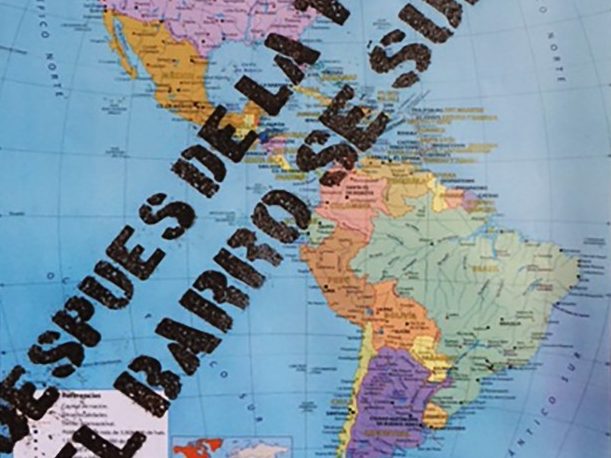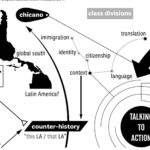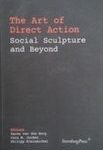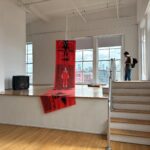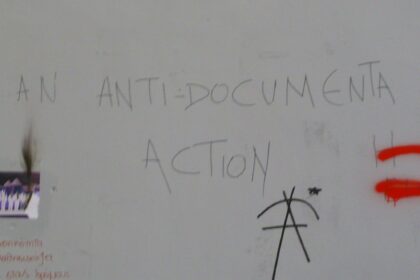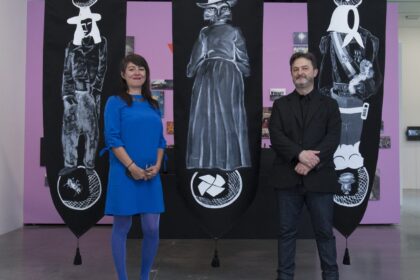Editorial | Winter 2020
Grant Kester
I am delighted to introduce this special issue of FIELD, guest edited by Eva Marxen of the School of the Art Institute of Chicago. The issue consists of a series of essays, interviews and other documents generated in response to the exhibition Talking to Action: Art, Pedagogy and Activism in the Americas. Talking to Action, curated by Bill Kelley, Jr., which was featured at the SAIC Sullivan Galleries in 2018. As part of the exhibition the Sullivan Galleries organized a number of public programs and events, from which the following material was drawn. The exhibition was, as the title suggests, dedicated to exploring a continuum of contemporary artistic practices that employ forms of discursive exchange and interaction to intervene in specific social and political sites. In some cases these projects have involved more direct forms of political resistance as well. Rather than seeing art’s capacity to generate critical and prefigurative insight as dependent on its segregation from social or political action, Talking to Action understands artistic practice and political praxis as interdependent and mutually enriching. It locates a primary nexus for these concerns in a range of new artistic and cultural projects developed in Latin America over the past decade. As a result, it also seeks to challenge the U.S. and Eurocentric character of existing debates about “social practice” or socially engaged art, arguing that this geo-political bias has severely constrained our understanding of the potential of the field. [1] This issue will feature bi-lingual translations in Spanish and English (the remaining translations will be added over the next three weeks).
The current historical moment is defined by the gradual unravelling of neo-liberalism and the accompanying rise of neo-fascist and neo-populist governments, as capitalism attempts to insulate itself from accountability for the suffering and inequality it continues to produce. We can learn a great deal about the vicissitudes of neo-liberalism from the experience of Latin America, which has served as something of a testing ground for the imposition of neo-liberal economic models. This is evident in the work of the “Chicago Boys,” who imported Milton Friedman’s flawed economic paradigms to Chile in the 1970s, resulting in disastrous consequences for the country’s social fabric, and leading to the present-day crisis in that country documented in this issue. It is evident as well in the widespread social and economic dislocation produced in Argentina by the imposition of the so-called “Washington Consensus” of privatization and social services cutbacks during the 1990s. At the same time Latin America has been the site of some of the most significant and creative challenges to this same paradigm, as evidenced by the contributors to this issue, and the broader range of oppositional artistic and cultural practices associated with the Pink Tide period. [2] If we want to develop a deeper understanding of the corrosive nature of neo-liberalism, and the forms of resistance necessary to challenge it, we have much to learn from the Latin American experience. As Mirliana Ramírez-Pereira hopefully proposes in her essay “Reflections from the Citizen, Political, and Critical Academy,” “Neoliberalism was born in Chile and will die in Chile”. One of the most important lessons it can offer us concerns the generative nature of resistance itself. For the artists and collectives presented in this issue of FIELD political resistance is not simply utilitarian, but rather, constitutes a form of creative production that is capable of generating its own unique forms of insight, and of re-shaping consciousness, and subjectivity, itself. What emerges from these practices is not merely the epiphenomenal expression of a naïve and spontaneous “actionism” but rather, a coherent pedagogical and critical methodology from which new paradigms of both resistance and creation can emerge.
[1] It is for this same reason that FIELD has devoted special issues to socially engaged art practices in Japan (FIELD #7 and #8), and global, anti-authoritarian practices (FIELD #12 and #13), among other topics. Our next issue (FIELD #16) will examine socially engaged art practices in Africa.
[2] See Collective Situations: Readings in Contemporary Latin American Art, 1995-2010, edited by Bill Kelley, Jr. and Grant Kester (Durham: Duke University Press, 2017).

